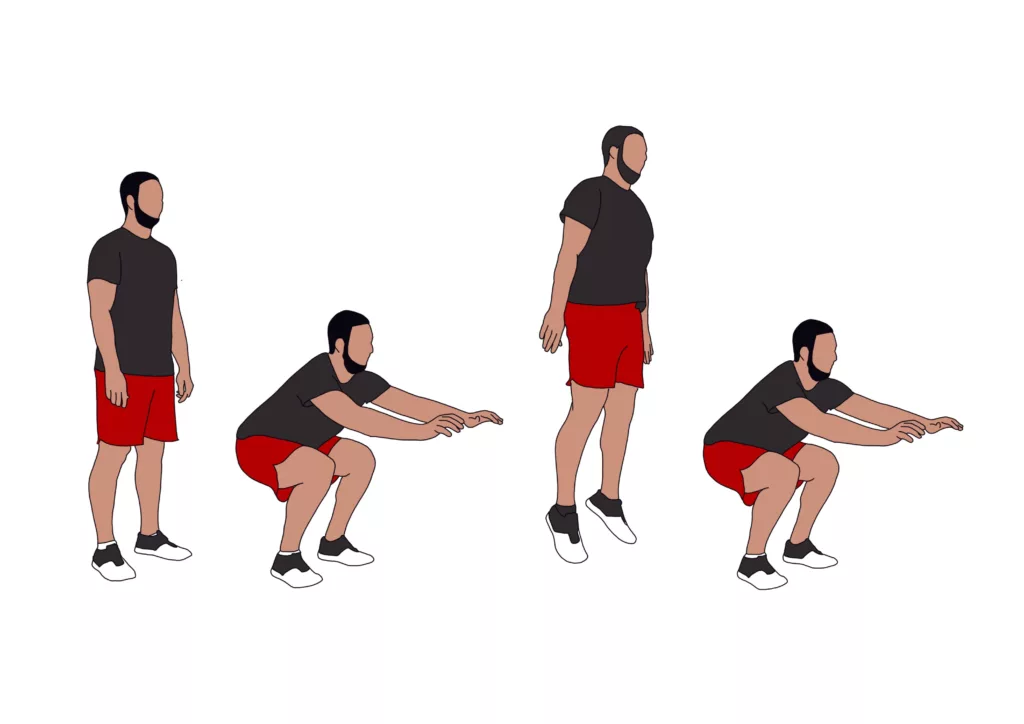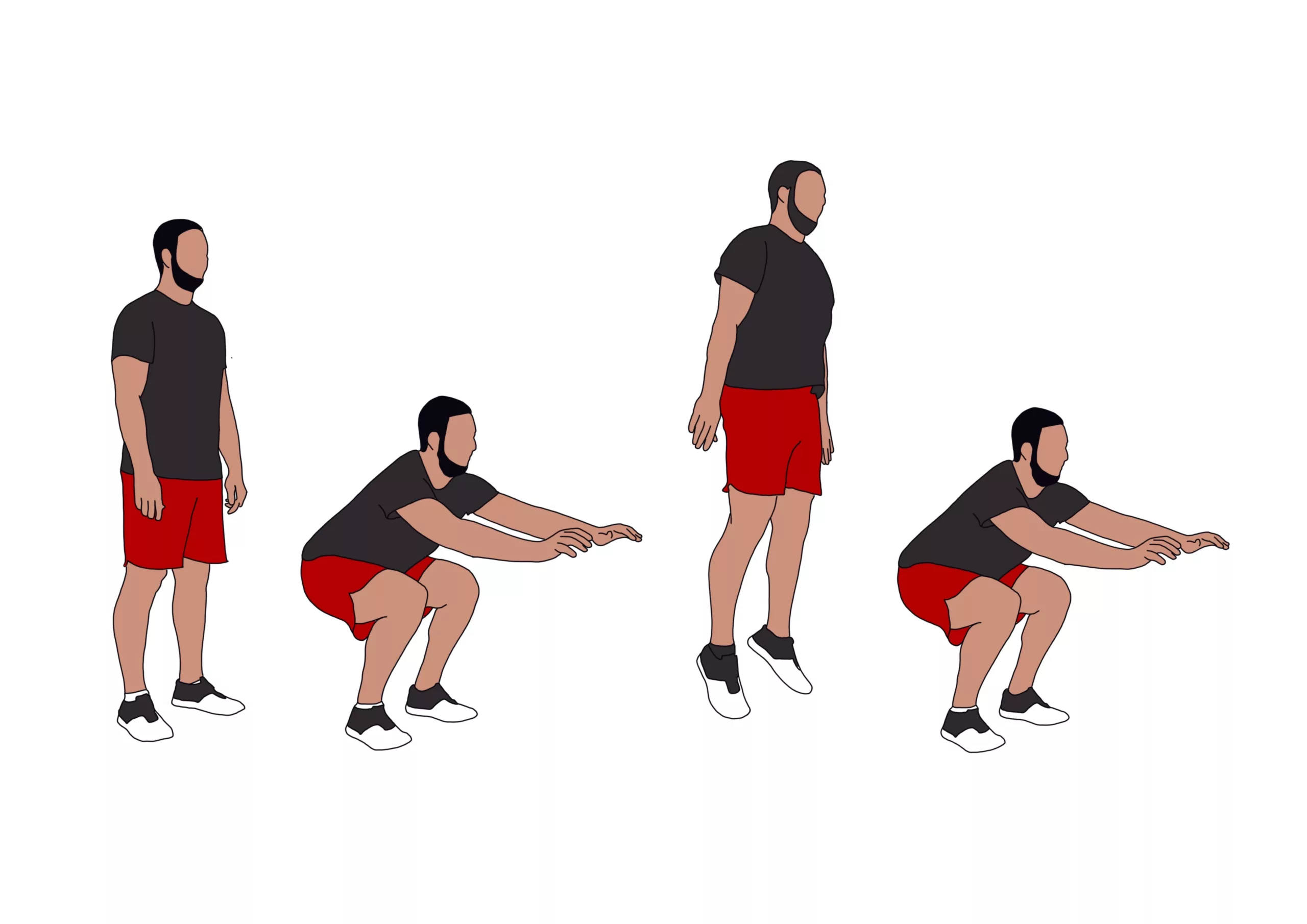Contents
- Background & Objective
- What They Did
- What They Found
- Practical Takeaways
- Reviewer’s Comments
- About the Reviewer
- Comments

Original study
Dello Iacono, A., Beato, M., & Halperin, I. (2020). The Effects of Cluster-Set and Traditional-Set Postactivation Potentiation Protocols on Vertical Jump Performance. International Journal of Sports Physiology & Performance, 15(4); 464-469.
Background & Objective
Post-activation potentiation (PAP) has been used to enhance athletic tasks, such as jumping and sprinting. To induce PAP, practitioners traditionally prescribe their athletes’ protocols of heavy loads (>85 % one-repetition maximum (1RM)) with recovery times of 4-11 min.
However, little research has investigated the use of cluster sets and PAP responses, and no research exists on the use of optimal power load (OPL) such as loading for cluster sets. Therefore, the purpose of this study was to compare the PAP response to countermovement jump (CMJ) performance using either traditional (TS) or cluster set (CS) protocols at OPL using jump squats.
What They Did
Twenty-six professional male basketball players (age = 23.2 ± 5.1 yr) who had a minimum of two-yr OPL experience performed both PAP protocols (TS and CS) in a randomised cross-over design. OPL was determined by performing jump squats on a Smith machine at increasing loads of 10% body mass, with a linear position transducer used to measure a decrease of mean propulsive power (MPP). Each participant also performed CMJ baseline testing.
The PAP protocols consisted of either 3 x 6 (TS) or 3 x 6 with 20-sec rest between every 2 reps (CS), each as jump squat OPL. After the protocol, participants performed CMJs on a force plate after 30 sec, 4 min, and 8 min passive recovery
What They Found
⇒ Performance decrements in CMJ were seen at all time-points after both PAP protocols compared to baseline, although the decline at 30 sec was sharper in TS compared to CS.
⇒ CMJ height was higher in the CS protocol at both 4 min and 8 min time-points by 1.33 cm and 1.64 cm, respectively.
⇒ Participants were able to maintain 95% of their relative MPP during the CS protocol, whilst during the TS protocol participants were able to maintain 85% of their relative MPP.
⇒ During the CS protocol, participants were able to produce a greater vertical impulse, peak ground reaction force, vertical stiffness, and less eccentric displacement during CMJ, compared to TS.
Practical Takeaways
⇒ If minimising fatigue, maximising power output throughout a set, and eliciting a strong PAP response is your desired session outcome, then replacing TS with CS appears to be a good option.
⇒ To maximise the effectiveness of CS, real-time feedback should be given through the use of a linear position transducer or force plate, especially if you are wanting to maximise power.
⇒ Sadly, force plates or velocity-based training devices such as Gymaware to give real-time feedback are not available to everyone. That doesn’t mean you shouldn’t use CS, they will still be effective at minimising fatigue.
⇒ Resting for 4-8 min is a long time to have athletes standing around, and if you have a lot of athletes, this could cause some disorganisation. Here’s an example of how you could plan a cluster CS protocol that would allow athletes this sufficient rest but still induce a PAP response:
- Jump squats 3 x 2+2+2 with 20 sec rest between reps and 2 min between sets @OPL (approximately 60% 1RM).
- Upper-body mobility exercise.
- Isolation prehab exercise or upper-body mobility exercise.
- PAP exercise (e.g. jump, sprint, etc.)
Reviewer’s Comments
When implementing CS, it is generally better to stick to the 2-3 rep range at each interval. Previous research has shown that after a few reps fatigue starts to kick in. It is also important to remember that performance of the first rep after a rest period is generally not maximised (see HERE), especially when the rest period exceeds 40 sec.
This is one of the first studies I have reviewed where there were power output differences between CS and TS protocols (see Performance Digest Issues #32 and #27 for more details). I don’t think this discrepancy comes down to the loading protocol used, rather the use of ballistic or non-ballistic exercise. It seems ballistic exercise creates a greater difference in the maintenance of power output throughout a CS set.”
Want to learn more?
Then check these out…
Watch this video
Read this article
Look at this infographic


